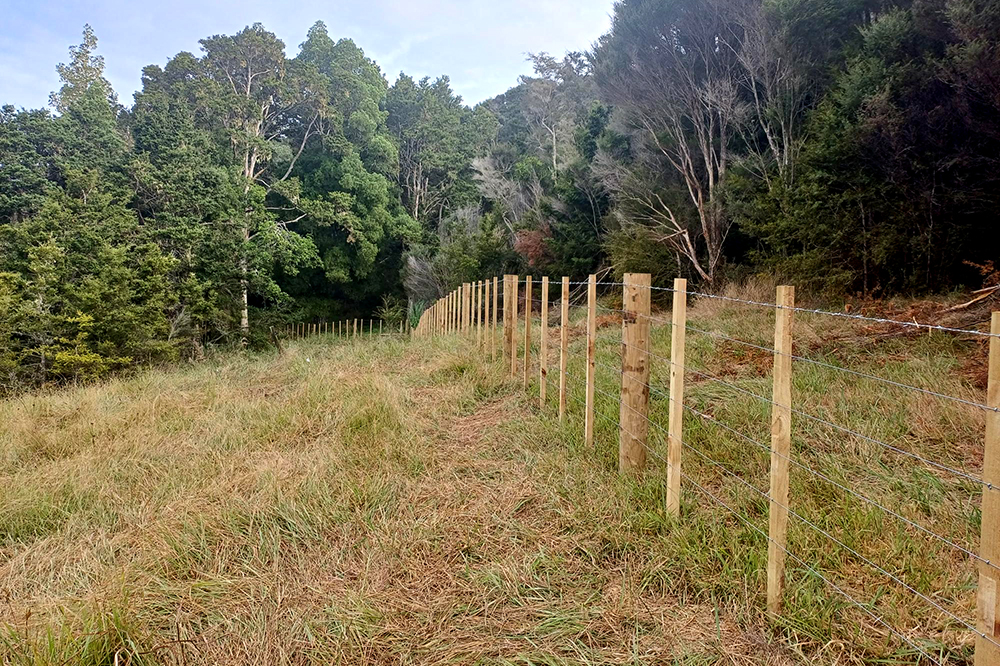Story
Flexible funding approach supports farm trust to protect te taiao (the environment)
A new flexible funding approach to delivering council funding is supporting a Northland ahuwhenua trust to protect native bush, improve freshwater quality, and reduce erosion in areas prone to stock damage.
Waipapa Ahuwhenua Trust has 275 hectares of whenua near Mōtatau, with about a third in pasture and two-thirds in native bush. It runs about 60 cattle.
Farm manager Riki Ngakoti says it’s important to the trust to “get the balance right”.
“It’s not only about production on our farm,” he says. “There’s always been an environmental side to our trust’s vision. We’ve always been interested in our role as kaitaiki and for our whānau to be involved in projects that are good for te taiao.”
“When an opportunity came up through our whanaungatanga [relationships] with Northland Regional Council’s iwi engagement kaimahi to retire some areas, we were keen to get involved.” Following a successful application in early 2023, the trust received just over $36,000 in three stages to complete 700 metres of two-wire electric fencing around waterways and close to two kilometres of six-wire batten fencing to exclude stock from native bush.

Six-wire fencing to exclude stock from native bush.
Northland Regional Council Land Management Advisor Holly Chappell worked with Riki to structure the funding in a way that suited the trust, providing some at the start of the project, some while work was underway, and some upon completion.
“This flexible approach to funding is a feature of our new Tāngata Whenua and Community Catchment Fund. It’s designed to make funding work better for groups or trusts who need it to get on-the-ground mahi done,” Holly says.
Previously, funding has usually been provided to reimburse applicants after work is approved and completed. The Tangata Whenua and Catchment Group Fund is a recent initiative designed to provide greater support for Māori landowners and catchment groups to get started on their freshwater projects. The programme has seen great success supporting a wide range of projects including riparian and bush fencing on whanau-owned land, water quality monitoring, catchment planning, and GIS training and mapping.
“Northland Regional Council – Holly, in particular – really worked with us,” Riki says. “Even though we had timeframes to work to, we didn’t feel under any real pressure. When wet weather delayed getting the last of the battens on, we were able to arrange an extension.”
“I definitely see the advantages to working with council on projects that we both have an interest in. I don’t think we’d have been able to get our projects done without the council’s support in the same timeframes, so it made a huge difference.”
Riki says the trust has achieved much better stock exclusion from parts of the farm that have been fully fenced off as a result of the work done.
“Cattle crawling into banks, cattle in the bush, and all the erosion we get from that, it’s almost been eliminated. There’s a bit more work to do but we have it under control. It’s definitely minimised the damage that happened before.”
While environmental protection and improving water quality in the two streams running through the property – the Waikaka and the Taumarere – were the main goals of the fencing work, Riki has noticed other benefits, too.
“The stock control it gave us was an added bonus. It’s a made a big difference for our farm operations as well,” he says.
The Tangata Whenua and Catchment Group Fund is now fully allocated for this year but keep an eye out in early 2025 when we will be advertising for applications for the coming 2025/26 year.
If you would like to find out more about flexible funding options, please contact the Land Management team on: 0800 002 004 or landadmin@nrc.govt.nz
